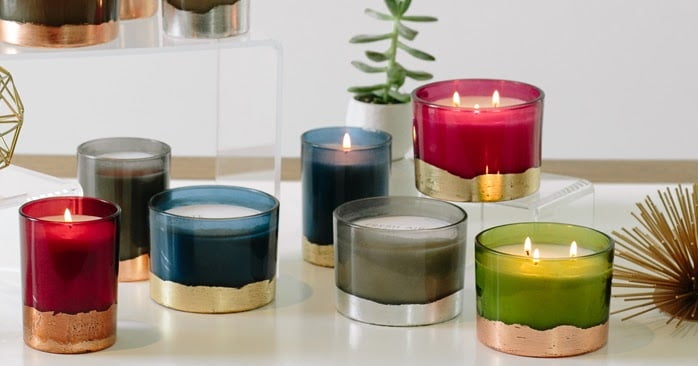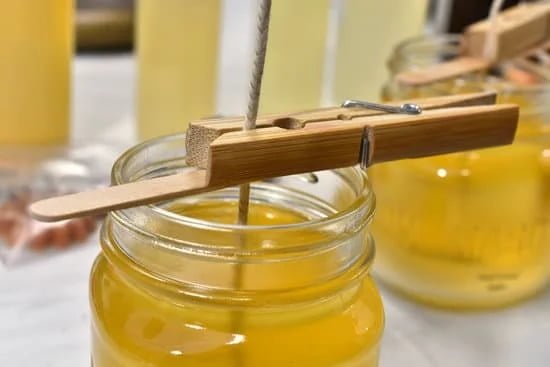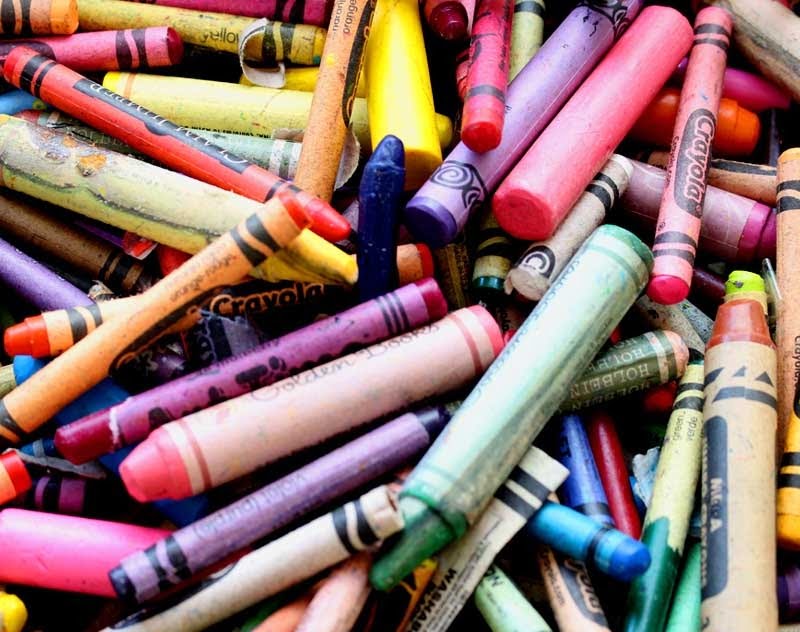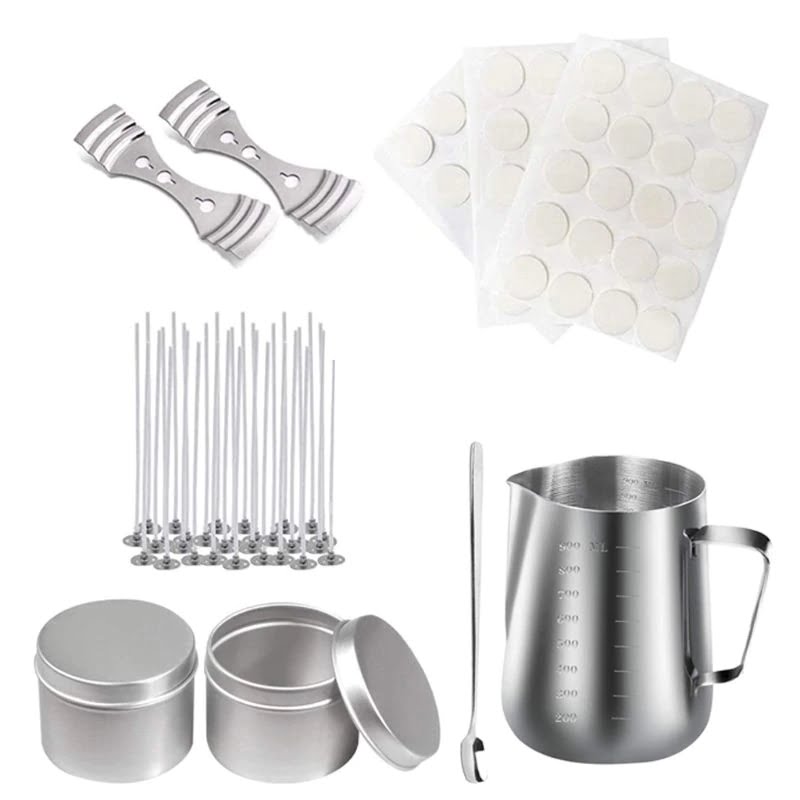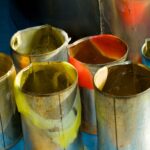Beeswax has long been revered for its versatility and natural properties, making it a sought-after ingredient in both candle making and cosmetic formulations. In recent years, the demand for natural and organic products has surged in the beauty and home fragrance industries. This article delves into the world of beeswax, exploring the differences between candle making beeswax and cosmetic grade.
Derived from the secretion of bees, beeswax is a substance with unique characteristics that make it highly desirable for various applications. Its natural color, scent, and ability to retain moisture set it apart from other waxes. As consumers increasingly prioritize eco-friendly options, beeswax has gained prominence as a sustainable alternative.
When it comes to candle making, beeswax offers an alluring glow that sets the ambiance in any space. The specific qualities of beeswax contribute to longer burning times and clean flames without emitting soot. On the other hand, cosmetic grade beeswax undergoes stringent quality control measures to ensure its suitability for skincare and beauty products. From moisturizers to lip balms, the uses of cosmetic grade beeswax are vast.
As we delve into this topic further, we will explore not only how these different types of beeswax are obtained but also key factors that differentiate them in terms of quality control. Whether you are looking to craft your own candles or enhance your beauty routine with natural ingredients, understanding the differences between candle making beeswax and cosmetic grade is essential.
Join us on this journey as we uncover the wonders of this versatile substance and empower you to make informed choices within this buzzing realm.
What is Beeswax?
Beeswax is a natural substance that is secreted by honeybees and has been used for centuries in various applications, including candle making and skincare. It is produced by worker bees in the hive to construct their honeycombs. Beeswax is known for its unique properties, making it highly desirable in both the beauty and home fragrance industries.
Origin: Beeswax is derived from the wax glands of female worker bees. These glands are located on the ventral surface of the abdomen and produce tiny flakes of wax called “scales.” The bees then chew or manipulate these scales to build comb cells within the hive.
Properties: One of the distinct characteristics of beeswax is its natural color, which can vary from pale yellow to dark brown depending on factors such as the bee’s diet and age. Beeswax also has a subtle, sweet aroma reminiscent of honey, giving it a pleasant scent when used in candles or skincare products. Additionally, due to its hydrophobic nature, beeswax acts as an excellent emollient and can help retain moisture on the skin when used topically.
Natural Color
- Ranges from pale yellow to dark brown
Aroma
- Subtle, sweet scent resembling honey
Skin Benefits
- Retains moisture and acts as an emollient
Candle Making Beeswax
Beeswax has been a staple in candle making for centuries, and for good reason. Its unique properties make it a preferred choice among candle enthusiasts and professionals alike. When it comes to creating the perfect ambiance with a warm and inviting glow, beeswax candles are unrivaled.
One of the distinct characteristics of beeswax that sets it apart from other waxes is its natural color. Beeswax can range from pale yellow to deep golden hues, adding an organic and rustic charm to any candle. Additionally, beeswax has a delightful subtle scent that adds an extra dimension to the overall sensory experience of using these candles.
Aside from its aesthetics, beeswax offers practical advantages as well. Beeswax candles have longer burn times compared to other types of candles, making them both economical and sustainable options. They also produce natural, soot-free flames, promoting cleaner air quality in indoor spaces.
To fully understand the allure of beeswax in candle making, it is important to delve into its composition. Beeswax is a substance secreted by worker bees in honeybee hives as they construct their comb homes. Made up primarily of esters of fatty acids and long-chain alcohols, this natural wax serves multiple purposes for bees – from storing honey to rearing young larvae.
Beeswax’s ability to retain moisture further enhances its appeal in candle making. As the wax burns, it emits negative ions that help cleanse the air by neutralizing pollutants such as dust or allergens. This unique feature not only adds a touch of luxury but also contributes to a healthier living environment.
In summary, when choosing beeswax for candle making purposes, one can expect an exquisite glow enhanced by its natural color and subtle scent. With benefits like longer burn times and clean burning flames, beeswax candles have become a coveted choice for those seeking an eco-friendly and aesthetically pleasing alternative to traditional paraffin or soy wax candles.
Cosmetic Grade Beeswax
Introducing Cosmetic Grade Beeswax
Cosmetic grade beeswax is an essential ingredient that plays a vital role in various skincare and beauty products. While similar to regular beeswax, cosmetic grade beeswax undergoes a meticulous refining process to meet stringent quality standards required for use in cosmetics. This ensures purity, safety, and optimal performance when incorporated into beauty formulations.
Stringent Quality Standards and Regulations
To ensure the highest quality of cosmetic grade beeswax, regulatory bodies have established strict standards and regulations. These guidelines cover aspects such as purity, contaminants, and safety assessments.
The purity of cosmetic grade beeswax refers to its freedom from impurities, including debris and unwanted substances that may hinder its effectiveness or cause skin irritation. Additionally, comprehensive tests are conducted to assess the presence of contaminants, such as heavy metals or pesticides, ensuring that the product is safe for use on the skin.
Cosmetic grade beeswax also undergoes safety assessments to determine its suitability for use in skincare formulations. These include tests for potential allergens or sensitizing agents that may cause adverse reactions when applied topically. Regulations vary by country or region, but reputable manufacturers adhere to strict standards to ensure consumer safety.
Uses in Skincare and Beauty Products
Cosmetic grade beeswax finds widespread application in skincare and beauty products due to its numerous benefits. Its natural emollient properties create a protective barrier on the skin’s surface, locking in moisture without clogging pores. This makes it suitable for use in lip balms, lotions, creams, and other moisturizing formulations.
The texture of cosmetic grade beeswax enables it to provide structure and stability to products like lipsticks, solid perfumes, and foundation sticks. Its waxy consistency helps these products retain their shape while providing a smooth application experience.
Furthermore, cosmetic grade beeswax possesses anti-inflammatory and antibacterial properties, making it beneficial for sensitive or acne-prone skin. It can soothe irritation, reduce redness, and promote healing in skincare products such as balms, ointments, and salves.
The Processing Journey
Beeswax, a substance secreted by bees, undergoes a fascinating journey from the hive to becoming an essential ingredient in both candle making and cosmetic formulations. Understanding this processing journey can provide valuable insight into the qualities and standards of beeswax used in these applications.
To obtain beeswax suitable for candle making, beekeepers must harvest the wax from beehives. This process involves carefully scraping off wax caps from honeycomb frames, which are then melted down to remove impurities like dirt, pollen, and dead bees. The resulting liquid is strained to further purify it, and it is then cooled and solidified into blocks or pellets that can be used for candle making.
In contrast, obtaining cosmetic grade beeswax requires additional steps to ensure its purity and compliance with stringent quality standards. After harvesting the beeswax as mentioned earlier, it undergoes further purification processes like filtering and bleaching to remove any remaining impurities. This refining procedure results in a whiter appearance compared to regular beeswax. Cosmetic grade beeswax also undergoes rigorous testing for contaminants such as pesticides or heavy metals to meet safety regulations.
During this processing journey, both candle making beeswax and cosmetic grade beeswax are subjected to specific extraction methods and quality control measures that differ based on their intended use. Candle making beeswax focuses more on factors like color (ranging from golden yellow to deep amber), scent (a natural aroma of honey), and melting point (ideal for longer burn times).
On the other hand, cosmetic grade beeswax prioritizes aspects such as purity (free from impurities), absence of contaminants, consistency in texture, and adherence to safety assessments for skincare and beauty products.
Overall, understanding how the processing journey affects the quality and properties of beeswax empowers crafters and beauty enthusiasts alike to make informed choices. Whether you seek the captivating glow of a beeswax candle or the beautifying benefits of cosmetic grade beeswax in skincare, knowing the intricacies of this journey equips you to choose the right beeswax for your craft or beauty routine.
Quality Control
When it comes to working with beeswax, both in candle making and cosmetic formulations, quality control plays a vital role in achieving desired results. The quality standards for candle making beeswax and cosmetic grade beeswax differ due to their specific purposes and applications. Understanding the key factors that differentiate these two types of beeswax can help ensure that you choose the right product for your craft or beauty routine.
For candle making beeswax, several important factors are taken into account during the quality control process. One of these factors is the color of the wax. High-quality candle making beeswax should have a natural, golden hue that enhances the aesthetic appeal of your candles. Additionally, scent is another crucial aspect to consider. Beeswax naturally emits a subtle honey-like fragrance, but candle making beeswax may undergo further refining processes to remove any impurities or undesirable scents.
Melting point is also an essential factor when it comes to candle making beeswax quality control. The melting point determines how well the wax will perform during the burning process. Candle makers typically aim for a lower melting point (around 145 – 150 degrees Fahrenheit) as this allows for a slower, more consistent burn and prevents rapid melting or uneven flame distribution.
On the other hand, cosmetic grade beeswax undergoes different quality control measures to ensure its suitability for skincare and beauty products. Purity is one of the most critical factors in cosmetic grade beeswax quality control. It must be free from contaminants such as pesticides, heavy metals, or residue from antibiotic treatments used by beekeepers.
Safety assessments are also conducted on cosmetic grade beeswax to verify its suitability for use on the skin. This includes testing for potential allergens or irritants that could cause adverse reactions when applied topically. Regulatory bodies often enforce strict guidelines regarding the quality and safety of cosmetic grade beeswax to protect consumers.
Choosing the Right Beeswax for your Craft or Beauty Routine
Factors to Consider
When choosing the right beeswax for your craft or beauty routine, there are several factors to consider.
Firstly, it is important to take into account personal preferences. Beeswax comes in various forms, such as blocks, pellets, or bars, and each form may have its own advantages depending on the specific project or application. For candle making, blocks or bars of beeswax are typically preferred as they allow for easier handling and measurement. On the other hand, pellets may be more convenient for cosmetic formulations as they melt quickly and evenly.
Another factor to consider is the desired scent of the beeswax. Beeswax has a naturally pleasant smell reminiscent of honey and flowers due to its origins from bees. However, some people may prefer unscented options or may want to experiment with different fragrances by adding essential oils or other natural scents.
Lastly, the intended use of the beeswax should also be taken into consideration. Different grades of beeswax may be suitable for specific applications. For example, if you are looking to make candles that produce minimal soot and have a longer burn time, choosing a high-quality candle making beeswax would be ideal. On the other hand, if you are formulating skincare products and want to ensure safety and compliance with regulations, opting for cosmetic grade beeswax would be more appropriate.
Tips for Selecting Beeswax
Here are some practical tips for selecting the appropriate beeswax for your craft or beauty routine:
- Source: Look for reputable suppliers who source their beeswax from trusted beekeepers who prioritize ethical beekeeping practices.
- Quality Standards: Check if the supplier provides information about the quality standards they adhere to when sourcing or producing their beeswax. Look out for certifications such as organic or natural labels.
- Purity: Ensure that the beeswax is pure and free from additives, chemicals, or contaminants. This is particularly important for cosmetic grade beeswax to ensure its safety on the skin.
- Packaging: Consider the packaging of the beeswax. It should be well-sealed and protected from moisture and other external factors that may affect its quality.
- Reviews and Recommendations: Read reviews or seek recommendations from others who have used the specific brand or type of beeswax you are considering. Their experiences and feedback can provide valuable insights.
Choosing the right beeswax for your craft or beauty routine is an essential step in ensuring successful and satisfying results. By considering factors such as personal preferences, desired scent, and intended use, you can select the appropriate form and grade of beeswax that will best suit your needs.
Remember to source your beeswax from reputable suppliers who prioritize quality standards and purity. With the right choice of beeswax, you can fully embrace the wonders of this versatile substance in both candle making and skincare routines.
Conclusion
In conclusion, beeswax is a fascinating substance that holds immense value in both candle making and cosmetic formulations. Throughout this article, we have explored the unique properties and benefits of beeswax, as well as the differences between candle making beeswax and cosmetic grade beeswax.
Beeswax offers a range of qualities that make it ideal for candle making, such as its alluring glow, longer burn time, and soot-free flames. On the other hand, cosmetic grade beeswax undergoes stringent quality control measures to ensure its purity and safety for use in skincare and beauty products.
Whether you are a craft enthusiast looking to create beautiful candles or someone seeking natural ingredients for your beauty routine, choosing the right beeswax is crucial. Consider factors such as personal preferences, desired scent, color, and intended use when selecting beeswax for your specific needs.
In embracing the wonders of beeswax, you can explore various DIY projects or further resources available to fully unleash its potential. Beeswax not only adds a touch of natural beauty to your surroundings but also provides numerous benefits for your skin and overall well-being. So why not dive into the world of beeswax and discover its endless possibilities?
Frequently Asked Questions
Can I use cosmetic grade beeswax for candles?
Cosmetic grade beeswax can generally be used for making candles, but it is important to consider a few factors. Beeswax has different grades based on its purity and filtering process, with cosmetic grade being one of them. While cosmetic grade beeswax may not be as pure or filtered as the highest grades specifically designed for candle making, it can still produce decent candles.
However, you might notice some imperfections like cloudiness or impurities in the finished product. It is advisable to always check the melting point of the wax before using it for candle making since different grades might have different melting points.
Which wax is better for candle making?
Determining which wax is better for candle making depends on personal preferences and specific requirements. Various types of waxes are commonly used, such as paraffin, soy, beeswax, and palm wax. Each type has its own unique qualities that can affect the appearance, scent throw, burn time, and sustainability of the candles. Paraffin wax is widely available and often considered easy to work with due to its low melting point and affordability.
Soy wax is a popular choice for those seeking a natural alternative with good scent throw and clean burn characteristics. Beeswax offers a distinct honey aroma and long burn time but tends to be more expensive. Palm wax is known for its beautiful crystalline finish but may require additional additives for optimal performance. Ultimately, experimentation and considering your specific needs will help determine the best wax choice.
How can you tell if a candle is 100% beeswax?
To determine if a candle is 100% beeswax or not requires careful examination of its characteristics and investigating any labeling or packaging provided by the manufacturer. Pure beeswax candles typically have a distinct yellowish hue with a slightly sweet fragrance reminiscent of honey due to their natural composition. Look closely at the label or packaging for any indications specifying “100% pure beeswax” or similar claims that confirm its purity without any additional blends or additives involved.
It’s also essential to check for any indications of synthetic additives or fragrances, as these would typically imply that the candle is not purely made from beeswax. Lastly, purchasing candles from reputable sources with transparent information about their ingredients can help ensure that you are getting genuine 100% beeswax candles.

Welcome to my candle making blog! In this blog, I will be sharing my tips and tricks for making candles. I will also be sharing some of my favorite recipes.

